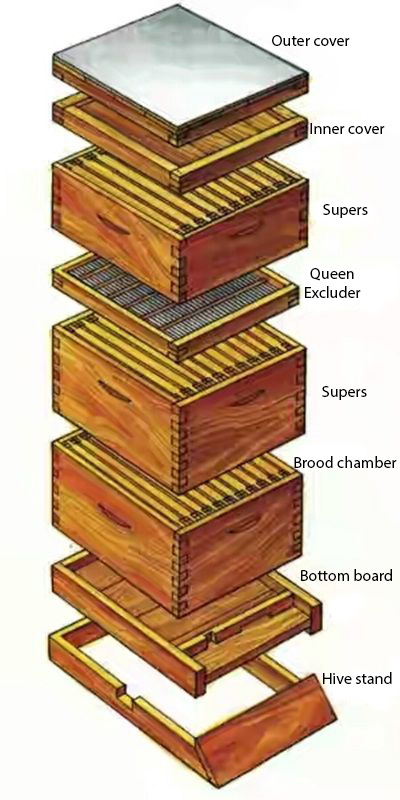Beehive Components and Equipment
Beekeeping is a fascinating and rewarding hobby that requires the right components and equipment to create a thriving and productive bee colony. Whether you’re a novice beekeeper just starting out or an experienced apiarist, understanding the essential components and equipment of a beehive is crucial to the success of your beekeeping venture. In this article, we’ll explore the key elements that make up a beehive and the equipment necessary for beekeeping.
**Beehive Components**
1. **Hive Body**: The hive body is the central structure of the beehive and consists of one or more boxes or supers. These boxes house the bees and provide space for brood rearing, honey storage, and pollen collection.
consists of one or more boxes or supers. These boxes house the bees and provide space for brood rearing, honey storage, and pollen collection.
2. **Frames**: Inside the hive body, frames hold the comb and provide structural support. Frames come in different sizes and materials, with wooden frames being the most common. Bees build their comb on these frames, and they can be easily removed for inspection and honey extraction.
3. **Foundation**: Foundation is a sheet made of beeswax or plastic with an embossed honeycomb pattern. It is placed in frames to give bees a guide for comb construction. Foundation sheets help maintain the integrity of comb and make it easier to manage bees.
4. **Inner Cover**: The inner cover sits under the outer cover and helps insulate the hive. It often includes a hole that serves as an entrance for the bees. Some inner covers also have a feeding hole for beekeepers to provide supplemental food.
5. **Outer Cover**: The outer cover is the topmost part of the hive and acts as a protective roof. It shields the colony from the elements, including rain, wind, and extreme temperatures, helping maintain a stable environment within the hive.
6. **Queen Excluder**: A queen excluder is a selective barrier placed between the hive body and the supers. It allows worker bees to pass through while preventing the larger queen from entering honey storage areas. This ensures that the queen does not lay eggs in the honeycomb.
7. **Bottom Board**: The bottom board forms the base of the hive. It includes an entrance for the bees and provides ventilation. Some bottom boards have a removable tray to monitor and manage hive pests and debris that fall from the hive.
**Beekeeping Equipment**
1. **Protective Gear**: Safety is a priority when working with bees. Beekeepers use protective gear such as bee suits, gloves, and veils to shield themselves from stings. A beekeeping suit is designed to cover the entire body, while gloves and veils protect the hands and face.
2. **Smoker**: A smoker is a handheld tool used to produce cool, white smoke. When applied to the hive entrance, it calms the bees, making hive inspections safer and less disruptive.
3. **Hive Tool**: A hive tool is a metal instrument with a flat, sharp end that beekeepers use to pry apart frames, boxes, and other hive components. It’s an essential tool for beekeeping tasks.
4. **Bee Brush**: A bee brush has soft bristles and is used to gently remove bees from frames, supers, and other hive components during inspections or honey harvesting.
5. **Feeder**: Feeders are used to provide supplemental food to the bees, especially during times of nectar scarcity. Common types include entrance feeders and top feeders.
6. **Extractor**: If you plan to harvest honey, an extractor is a must-have piece of equipment. It’s used to remove honey from the frames without damaging the comb. Extractors come in manual and electric varieties.
7. **Bee Smock**: A bee smock is a lighter alternative to a full bee suit. It covers the upper body and can be worn over regular clothing for quick hive inspections.
8. **Queen Marking Kit**: Beekeepers often mark their queen bee with a small colored dot to easily identify her among the thousands of worker bees. A queen marking kit includes special non-toxic paint and tools for marking the queen.
Understanding the various components and equipment used in beekeeping is essential for successfully maintaining healthy and productive bee colonies. Proper hive management and the right tools will help ensure your bees thrive, ultimately resulting in the sweet reward of honey and other bee-related products. Whether you’re a beginner or an experienced beekeeper, having the right gear and knowledge is key to a successful and fulfilling beekeeping experience.
